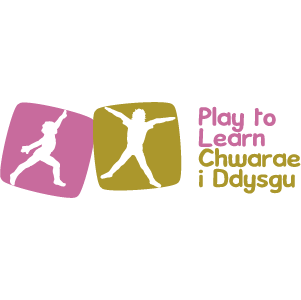
Instructions
Leaping is a large step taking off from one foot and landing on the other. The skill can be a single movement, as in leaping over an object, or used continuously. It is important for athletics, some traditional dances and some major games.
- Step forward
- Drive upward and forward from the ball of the foot
- Lean forward with the upper body while leaping into the air
- Stretch forward with the opposing arm and leaping leg
- Land on the ball of the foot with knee, hip and ankle bent
- Drive the leg through to repeat the leap

Safety
Ensure…
- children land on the balls of their feet
- repetition of the leaping action is avoided on hard surfaces
- the surface is not slippery
- children bend their knees on landing
Opportunity to develop
- Co-ordination
- Physical control
- Motor skills
Physical Development Area of Learning
- contributes to ‘Personal’ and ‘Adventurous and physical play’ skills sections
If you see
| Observation | Likely Cause | Solution |
|---|---|---|
| Fails to gain much distance in the flight phase | Takes off with a straight leg | Practise hopping into the air |
| Finds the push-off phase difficult | Push off from the ball of the foot | Rock back and forth from their heel to their toe. Step onto the front of their foot and extend up. |
| Difficulty in using their arms in opposition to the take-off leg | Difficulty with co-ordinating arms and legs working in opposition | Practise activities that involve opposite leg and arm working together |
| Difficulty in stretching and reaching with the leading leg | Difficulty in co-ordinating initial movement which requires a run and take-off on one foot | Walk through taking little steps and encourage stretching and pointing the toe |
Can you see?
- the child demonstrating a relaxed rhythmical action?
- the child taking off on one foot and landing on the other?
- the child performing a forceful extension of the take-off leg?
- the child demonstrating a slight forward lean?
- the child showing definite arm opposition to take-off leg?
- the child’s legs extended during the flight phase?
- the child taking off and landing on the ball of the foot?
-
Mostly No
- Practise hopping – use both legs
- Travel around the hall taking off on one foot, leaping over a ‘puddle’ to land on the other
- Walk across the room taking large steps, like a giant swinging arms in opposition
- Step forward and rock forward onto balls of feet and rock back
- Practitioner to hold child’s hand to support leaping action
-
Yes and No
- Walk around the room on balls of feet and leap across cones, bean bags, ropes
- Extend up onto balls of feet with each step, arms working in opposition – combine three leaps
-
Mostly Yes
- Leap for distance over cones, ropes, chalk markings
- Run and leap; run and leap across a small area
- Leap over objects such as hurdles, boxes – increasing in height
- Leap five times, aiming to cover ever-increasing distances
- Leap rhythmically to music
-
Challenge
- Leap in different directions and at different speeds, then in response to a range of cues
- Leap in a strong, powerful action trying to stay in the air as long as possible, gaining as much height as possible, use arms to drive upwards – bounding
- Bound in different directions and at different speeds, then in response to a range of cues
- Combine leaping, galloping and skipping in response to a range of cues, using different directions, pathways and speeds


